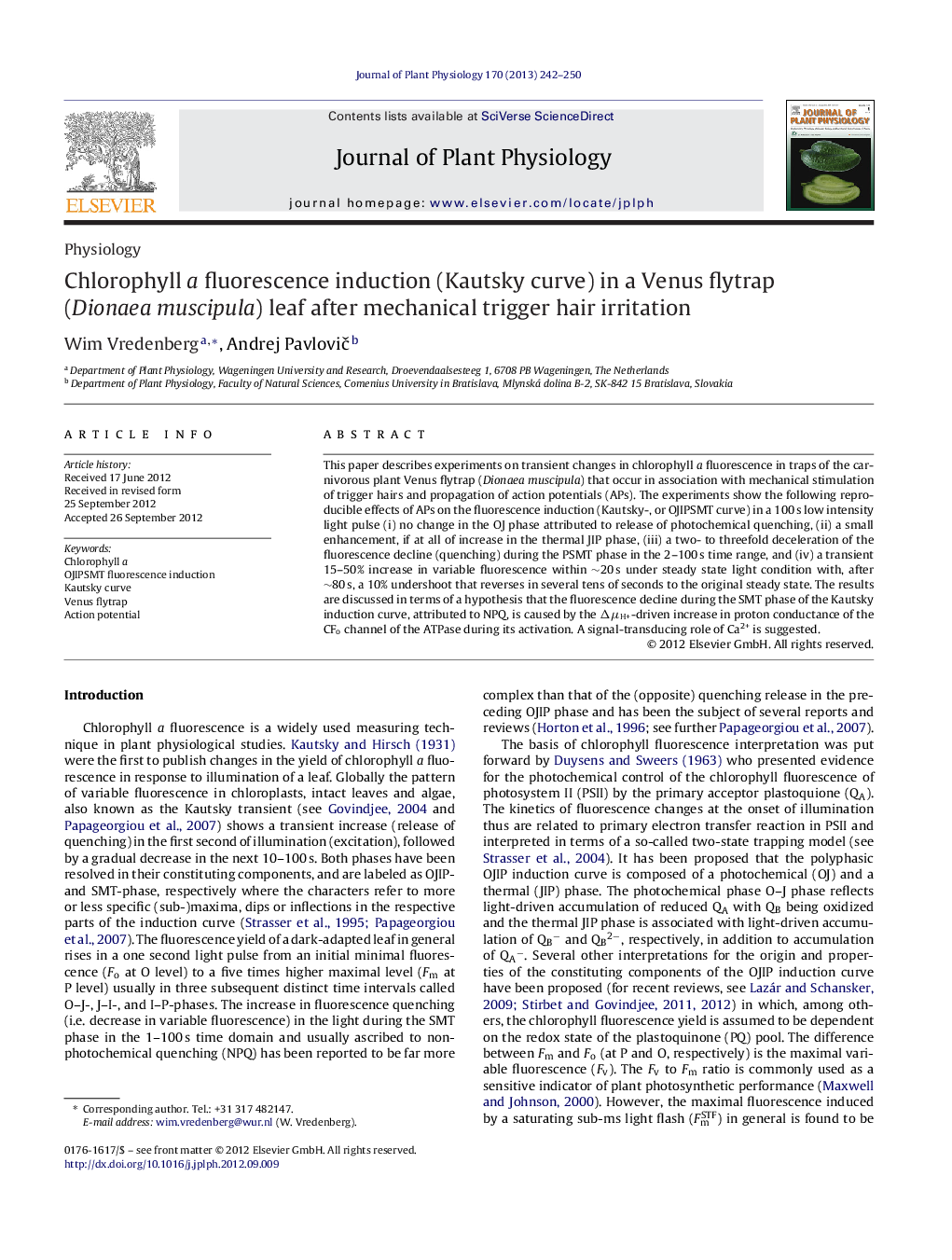| Article ID | Journal | Published Year | Pages | File Type |
|---|---|---|---|---|
| 2056163 | Journal of Plant Physiology | 2013 | 9 Pages |
This paper describes experiments on transient changes in chlorophyll a fluorescence in traps of the carnivorous plant Venus flytrap (Dionaea muscipula) that occur in association with mechanical stimulation of trigger hairs and propagation of action potentials (APs). The experiments show the following reproducible effects of APs on the fluorescence induction (Kautsky-, or OJIPSMT curve) in a 100 s low intensity light pulse (i) no change in the OJ phase attributed to release of photochemical quenching, (ii) a small enhancement, if at all of increase in the thermal JIP phase, (iii) a two- to threefold deceleration of the fluorescence decline (quenching) during the PSMT phase in the 2–100 s time range, and (iv) a transient 15–50% increase in variable fluorescence within ∼20 s under steady state light condition with, after ∼80 s, a 10% undershoot that reverses in several tens of seconds to the original steady state. The results are discussed in terms of a hypothesis that the fluorescence decline during the SMT phase of the Kautsky induction curve, attributed to NPQ, is caused by the ΔμH+-driven increase in proton conductance of the CFo channel of the ATPase during its activation. A signal-transducing role of Ca2+ is suggested.
